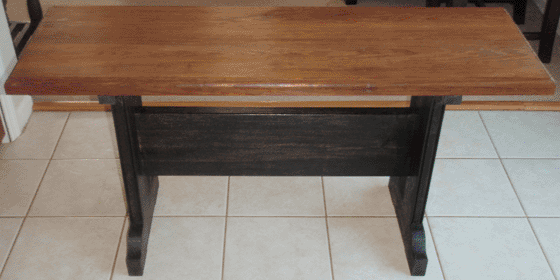
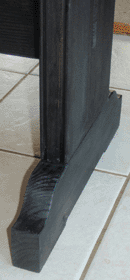
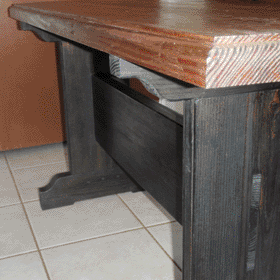
When designing structures, features intended to be unobtrusive or "invisible" can be blackened to reduce their visual impact. Ordinarily this can be achieved with paint, but for furniture and other interior wooden objects, a more interesting and durable finish can be achieved by staining. My original wood stain is suitable for this task, and by modifying the staining process somewhat, a fairly uniform black can be achieved, in which the pattern of the wood grain is still present.
The foundation of this process is the interaction between soluble ferrous salts (in my case, ferrous acetate) and tannic acid. These compounds form a soluble ferrous tannate complex, which is a dark gray. On exposure to air, this oxidizes to a jet-black ferric tannate complex, which is responsible for the final color. To achieve this color as a permanent stain in a piece of wood, these reactions must happen within the wood fibers themselves, and the most suitable process I found to achieve this is as follows. First, the wood to be stained should be planed smooth and dampened with water. Next, it is painted with a 5% (by weight) solution of tannic acid (in my case, quebracho extract). Once this has dried, the wood is then painted with wood stain (ferrous acetate) and allowed to dry for at least three hours, so that the oxidation reaction has time to complete. Finally, any surface residue is wiped off with a damp rag and a final coat of 5% tannic acid is painted on, which reacts with any excess iron and redissolves the original stain to level out the color. The results of these steps can be seen below, as applied to a piece of white pine.
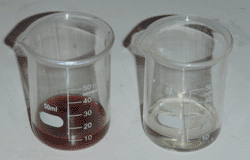
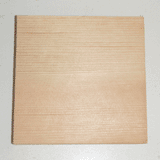
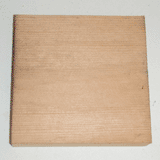
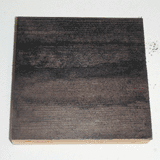
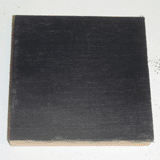
Though somewhat time-consuming, this process produces consistent, visually appealing results. Furthermore it is inexpensive, and due to being entirely water-based, there are no harmful solvent fumes to consider. The abundance of iron introduced to the wood also acts as a drying catalyst for a subsequent oil finish, which then isolates those iron compounds from the surrounding atmosphere, preserving their color. The table at the top of the page was finished in this way, with the top being stained and the legs blackened, and the table as a whole then being oiled and waxed. The entire table was made from 2x10 boards of yellow pine, which I have found to be suitable for furniture due to its relative hardness. Despite being fairly resinous, and therefore a poor match for water-based stains, the results are appealing enough that this combination of materials will likely see extensive use in later projects.